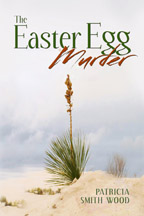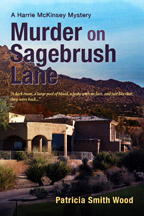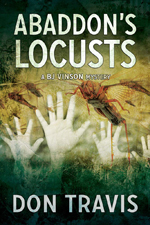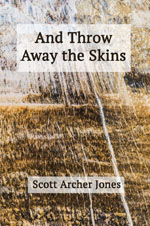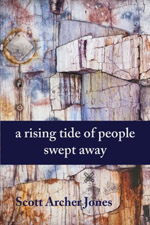After a brief stint in the Peace Corps, author Vicky Ramakka had a long career in higher education. Once an academic writer, she now wields a more creative pen to weave stories inspired by the Four Corners region. Her first novel, The Cactus Plot: Murder in the High Desert (Artemesia Publishing, 2019), follows botanist Millie Whitehall as she “races to investigate [a] murderer — before she becomes the next victim.” Look for Vicky on her Facebook page.
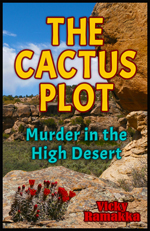 What is your elevator pitch for The Cactus Plot?
What is your elevator pitch for The Cactus Plot?
The Cactus Plot is an environmental mystery with a botanist heroine who uses knowledge of plant ecology to solve two murders. New to the West, Millie Whitehall expects to spend a peaceful summer surveying endangered plants on Bureau of Land Management (BLM) land in northwest New Mexico. She experiences the friction of working for the BLM through the characters she meets. The story is an entertaining mystery with the underlying theme of conflicting uses of public lands.
What unique challenges did this work pose for you?
I’m too easily distracted while doing research. I start to research a point, such as whether Shiprock is the second or third largest town on the Navajo Reservation, then I find some other interesting fact, and that leads to another and another. Then I want to cram all this great information into the story I’m writing. Much as I enjoy research, I have to guard against going down rabbit trails that do not relate to my story.
Tell us a little about your main character and why readers will connect with her.
Like me, the heroine, Millie Whitehall, grew up on the East coast. Also like many newcomers to New Mexico, she has a lot to learn — how to answer the State’s official question, red or green; how to drive treacherous roads and deal with rattlesnakes; and that there’s a story behind every character. Mainly, like many folks that have adopted New Mexico as their forever home, she replaces initial perceptions that New Mexico is a barren desert with a fascination for its unique high desert vegetation and falls in love with its sunsets.
Why did you choose New Mexico as the setting for the book?
Following the axiom “write what you know,” I placed this story where I live. I love exploring the backcounty of northwest New Mexico. I am a volunteer Site Steward for a significant rock art site in Largo Canyon that I have visited more than a dozen times. While the intent of the Site Steward program is to monitor and deter vandalism of archeological sites, I just thoroughly enjoy standing before a cliff face covered with petroglyphs and surrendering to wonder — who made these, what were they communicating, why this spot, what was their world like at the time?
What first sparked the story idea?
I’ve enjoyed reading Nevada Barr’s novels which are set in national parks. These are lively mysteries, but they seemed to miss a lot of what I consider the best part of visiting a national park — learning about the history, plants, and animals of that particular location. (Recently Scott Graham has produced an engaging mystery series set in mainly southwestern national parks.)
I also noticed that few novels are set on BLM land. Called “the nation’s largest landlord,” these lands make up the major portion of publicly owned land in New Mexico. In The Cactus Plot, I combined my interest in natural history with the complexities of working for the BLM which is tasked with managing for multiple use, and sometimes these uses conflict with one another.
Why is this novel unique in the mystery genre?
There are few novels set in northwest New Mexico with an environmental slant. Of those mysteries that are set in the Four Corners area, most have protagonists who are law enforcement officers investigating crime. The heroine of this book is a botanist who happens to get drawn into a situation where two seemingly unrelated deaths involve plants. This book is chock-full of native plants and has characters you are likely to encounter in any Farmington diner (ranchers, oil and gas field hands, tourists, Navajos, and government workers). Readers of The Cactus Plot often comment that they enjoyed learning more about the ecology of our area and the workings of the BLM.
What was your favorite part of putting this project together?
All the help from friends and networking with other writers. A friend in Bluff, Utah designed the cover and another friend drew the cactus figures that decorate each chapter. My critique group, San Juan Writers, was a great help. I am a learner at heart, so I thank all the presenters who shared their expertise at workshops and conferences, such as SouthWest Writers and past Hillerman conferences. And talk about learning — wow, the whole publishing process was an eye-opener. Thank heavens Geoff Habiger of Artemesia Publishing had the patience and faith in my book to work through edit after edit and coach me through what seemed like a hundred-and-one details to transform a sheaf of manuscript papers into a real book to hold in my hand.
Any new writing projects?
I have started the sequel to The Cactus Plot. The botanist heroine will be back, this time working side by side with an archeologist. I want to delve into the phases of human occupation in northwest New Mexico, from ancestral Puebloans, the early Navajo, Hispanic homesteaders, and now, oil and gas production. Each of these has made an impact, yet our enduring high desert remains.
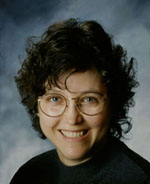 KL Wagoner (writing as Cate Macabe) is the author of This New Mountain: a memoir of AJ Jackson, private investigator, repossessor, and grandmother. Kathy posts to a speculative fiction blog at klwagoner.com and writes about memoir at ThisNewMountain.com.
KL Wagoner (writing as Cate Macabe) is the author of This New Mountain: a memoir of AJ Jackson, private investigator, repossessor, and grandmother. Kathy posts to a speculative fiction blog at klwagoner.com and writes about memoir at ThisNewMountain.com.




